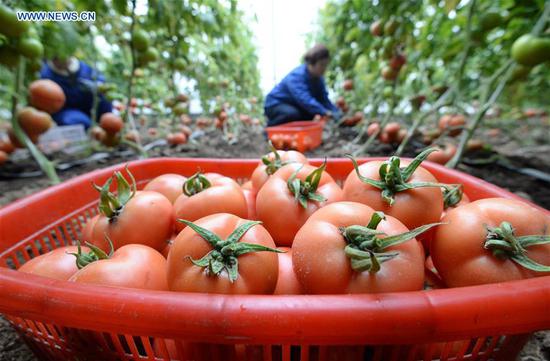
People buy nuts at a supermarket in Hefei, Anhui province. (Photo by Chen Sanhu/For China Daily)
Comfort food, or snacks and beverages that people consume for pleasure or mood enhancement rather than nourishment or energy, has big business potential in China, which could help the segment to evolve, according to an industry report.
Consumers typically depend on comfort food when facing problems like depression due to work pressure or isolation, consultancy firm Mintel said in its report.
The growing pressures of modern life and the rise of singles as a key consumer group are key factors behind the increasing demand for comfort food, it said.
When the market size grows, there would be greater chances for the segment to upgrade itself and make products that are not only safe or healthy but fulfil both material and spiritual needs of consumers, market insiders said.
Current financial indicators show the segment may well emerge as one of the hot spots in the fast-moving consumer goods sector.
According to a report in Yicai, a business news outlet, revenue of Qiaqia Food reached 2.91 billion yuan ($423 million) for the January to September 2018 period, up almost 16 percent year-on-year.
Annual net profit of Shanghai-based snack food chain Laiyifen stayed at over 100 million yuan from 2015 to 2017.
Over the last three years, compound annual growth rate of snacks producer Good Food's Stores E-commerce Co Ltd's main business reached about 31 percent, it said.
The snacks segment has evolved from merely meeting people's dietary demands to giving them mental pleasure, industry insiders said.
Gross output value of Chinese snacks grew 422.51 percent from 424 billion yuan in 2006 to 2.21 trillion yuan in 2016 with a compound annual growth rate of almost 18 percent, according to a December report from the Circulation Industry Promotion Center, which is part of the Ministry of Commerce.
By 2020, the figure will reach 3 trillion yuan, said Chen Lifen, deputy director of the service industry research office at the center.
Consumers such as Peng Kaidi, 29, a public relations practitioner in Beijing, could help propel the segment toward that estimate.
Peng said she regularly consumes candies and milk tea during afternoon breaks. Over weekends at home, she gorges on packaged peanuts, melon seeds and almonds while watching operas or reading books.
"Only in that way do I feel the weekend mood, that I'm taking a rest," she said.
She also developed a sweet tooth recently as an escape from negative emotions brought by heavy workload. "A piece of cake can make me feel better."
Chocolate, vegetables, and assorted packaged snacks like potato chips are among popular comfort foods, the Mintel report stated.
"Chinese customers tend to seek comfort in food because they generally know food can influence their emotion," the report said.
Manufacturers of healthy comfort foods may want to highlight mood-elevating properties of their products to build their brands, said Li Meng, a food and beverage researcher at Mintel.
Chen Ke, a senior partner of consultancy firm Roland Berger, said snacks have social attributes such as "sharing with friends" and "giving myself a treat", which can meet the psychological demands of the post-1990s generation, a major consumer of packaged snacks.
He said the snacks business is set to boom. Most of the young consumers have sufficient money these days to buy more products.
Also, some Chinese are replacing breakfast and lunch with high-quality snacks. This trend is a direct consequence of modern e-commerce and logistics that are boosting sales, which in turn are enabling efficient supply of raw materials and helping improve manufacturing.
According to a research report from Roland Berger, though gross margin of snacks producers is about 60 to 70 percent, net profit is low at 2 to 5 percent, due to the high costs involved in purchasing raw materials, operations and marketing.
The problem of homogenization is also common in global markets.
Chen suggested that health snack producers should develop more differentiated products in terms of taste and packing, as well as emphasizing health-related properties and emotional payoffs, to boost sales.


















































